The Oil Capital of Norway
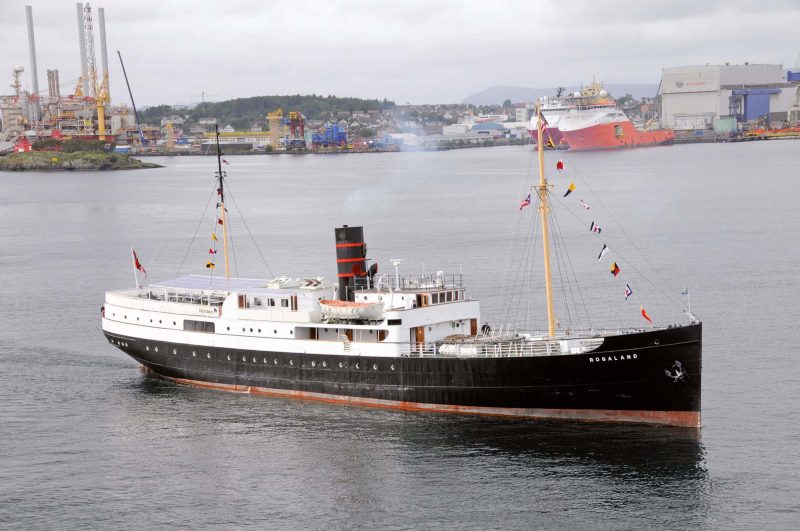
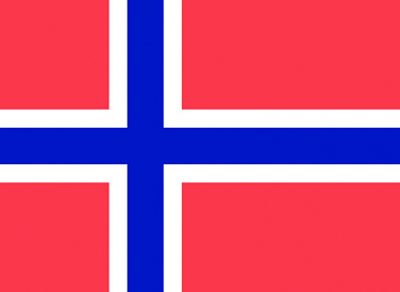
 When I twice visited Stavanger in the late 1950s on the much loved Bergen Line ferries Leda and the twin funnelled Venus, Stavanger was a small town of less than 50,000 inhabitants and a very small, narrow harbour called the Vagen, with the Bergen Line berth on the western side. Today, this berth is called the Ferjeterminal Utland (Overseas Ferry Terminal), and although there have been some small changes, the harbour is still very recognisable. Stavanger is now a booming oil town of 134,000 inhabitants with 40% of the population working in the oil industry and only 10% in service industries. Stavanger is the oil capital of Norway, with drilling first beginning in offshore Norway for Esso in 1966, and with Statoil founded as a limited company owned by the Government of Norway on 14th July 1972 by a unanimous Act passed by the Norwegian parliament Stortinget, to enable Norwegian participation in the oil industry. Agreements had been signed in 1965 with the United Kingdom and Denmark to share out the North Sea oilfields on the median line principle.
When I twice visited Stavanger in the late 1950s on the much loved Bergen Line ferries Leda and the twin funnelled Venus, Stavanger was a small town of less than 50,000 inhabitants and a very small, narrow harbour called the Vagen, with the Bergen Line berth on the western side. Today, this berth is called the Ferjeterminal Utland (Overseas Ferry Terminal), and although there have been some small changes, the harbour is still very recognisable. Stavanger is now a booming oil town of 134,000 inhabitants with 40% of the population working in the oil industry and only 10% in service industries. Stavanger is the oil capital of Norway, with drilling first beginning in offshore Norway for Esso in 1966, and with Statoil founded as a limited company owned by the Government of Norway on 14th July 1972 by a unanimous Act passed by the Norwegian parliament Stortinget, to enable Norwegian participation in the oil industry. Agreements had been signed in 1965 with the United Kingdom and Denmark to share out the North Sea oilfields on the median line principle.
The headquarters of Statoil are in Stavanger, as are the Norwegian subsidiaries of every oil major in the world, and the Offshore Northern Seas (ONS) oil exhibition, the largest exhibition and conference for the oil and energy sectors, is held every two years in Stavanger. Oil in huge quantities started to flow from the Norwegian sector of the North Sea in 1969, and after much discussion, Stavanger was chosen as the oil centre of this industry, with a hectic period of growth following. Some 78 blocks of the Norwegian North Sea and 22 licences had been granted to world oil majors and groups of companies in the first licensing agreements granted by the Norwegian Government in April 1965. The semi-submersible drilling rig Ocean Traveller was towed from New Orleans to Stavanger for Esso at that time, and began drilling in block 8/3 on 19th July 1966 some 110 miles south west of Stavanger, and soon struck oil in unimaginable quantities. The Norwegian Petroleum Directorate (NPD) was created by the Norwegian Government as an oil agency in 1972, and the Petroleum Safety Authority (PSA) was created on 1st January 2004 to work with that agency on safety in oilfields.
History Of Stavanger
The Stavanger region, part of the present day county of Rogaland, was first settled shortly after the ice retreated after the last Ice Age around 10,000 years ago. The Vikings of this area under rulers called Jarls, formed themselves into kingdoms and travelled extensively in longships as far as Russia and the East Coast of Canada. The Viking era was helped by the natural harbour of Stavanger and was strategically important to their conquests across the North Sea to Scotland, England and Ireland with a good shipping route to the west of Stavanger and the fertile Ryfylke islands to the north. This North Jaeren geological area of flat land became a Viking economic and military centre as far back as the year 700, with the consolidation of the Norwegian nation at the nearby Battle of Hafrsfjord around 872, won by Harald Fair Hair, who used elite swordsmen in groups of a dozen to win the battle.
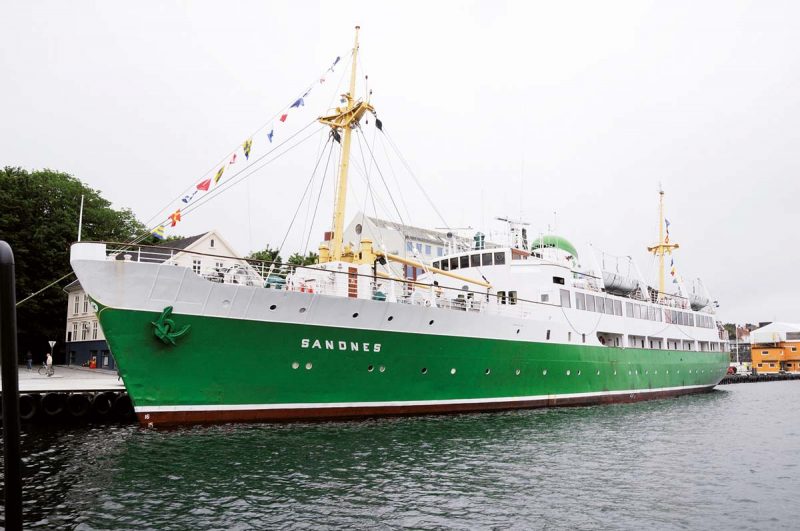
Longships of considerable size and capable of making long ocean voyages were built all across Southern Norway, and in Rogaland. In the year 760, raiding began across the North Sea, and in 793 the Vikings attacked the centre of English Christianity at Lindisfarne in Northumberland murdering, raping, looting and pillaging the local population for some distance inland.
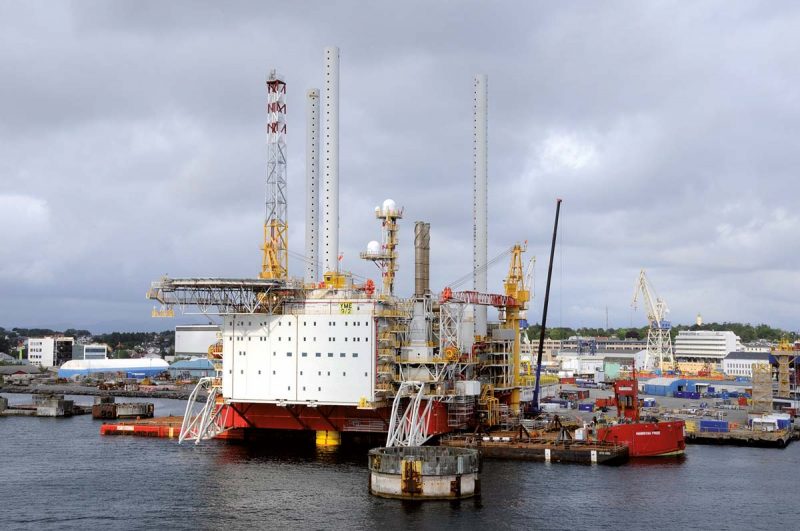
After conversion to Christianity, Stavanger had grown into a centre for church administration and an important south west coast town of Norway by the year 1100. Stavanger is thus one of the oldest towns in Norway, with the Stavanger bishopric established in 1120 by Bishop Reinald, who probably came from Winchester (England) to begin the construction of Stavanger Cathedral (Stavanger Domkirke) at that time, which was finished in 1125, which is taken as the foundation year of the city of Stavanger. This cathedral dedicated to St. Swithun is in the Anglo-Norman style of architecture with twin towers of grey stone and the nave in between, with a part rose window at one end, and has been unchanged since the 14th century.
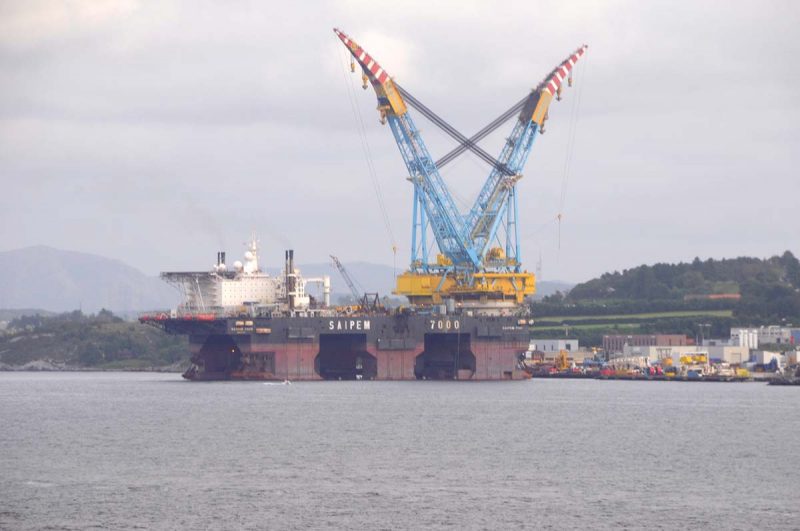
The Protestant Reformation of 1536 and the establishment of Kristiansand to the south in 1610 led to the relocation of the Bishopric to that city, with the population of Stavanger at just over 3,000 persons in 1769, however rich herring fisheries in the 19th century ensured the growth of Stavanger. The most important industries of Stavanger in the 19th and 20th centuries were ship agencies, shipowning, shipbuilding, fish canning industries, fishing and trawling. Tens of thousands of people looking for a better life emigrated from the Vagen in the decades after 1900, and there is an Emigration Museum on the west side of the Vagen to tell their story, as well as an excellent Maritime Museum, two of twenty exceptional museums in Stavanger. Gamle Stavanger (Old Stavanger) is located on the west side of Vagen harbour and has a collection of 18th and 19th century wooden houses. These are protected and considered a major part of the cultural heritage of the city. The city centre is a car free zone with an open air vegetable market every working day.
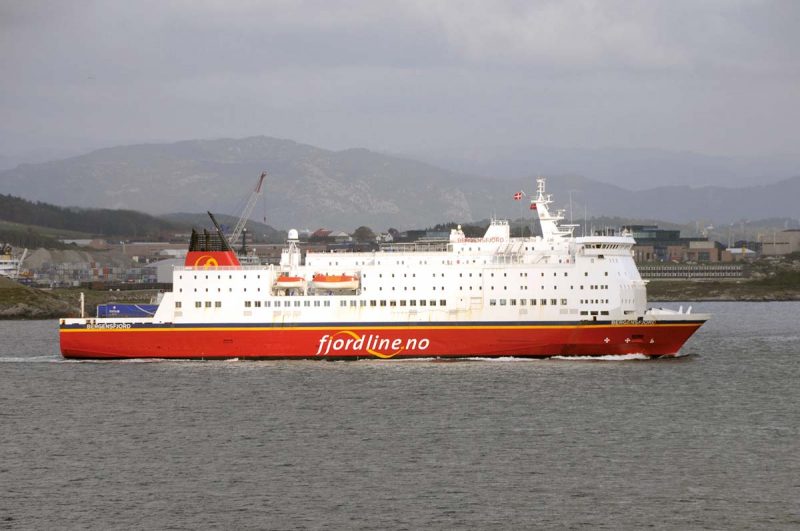
Stavanger has a coastal landscape with the Byfjorden and the Gandsfjorden running along the east side of the city, and the Boknafjorden to the north, as well as the Hafrsfjorden to the south. The city of Stavanger has five lakes including Breivatnet, Stora Stokkavatnet, and Mosvatnet forming a landscape and seascape rich in marine life. The city includes many islands off the coast including Bjornoy, Buoy, Engoy, Grasholmen, Hellesoy, Hundvag, Kalvoy, Lindoy, Solyst, Steinsoy and Vassoy, as well as the eastern half of the island of Amoy, and includes tiny rocky islets such as Majoren and Tjuvholmen that are on the direct shipping route to the city from the sea. Two red lights are the leading lights marking the safe passage from the sea to the city and the narrow city Vagen harbour.
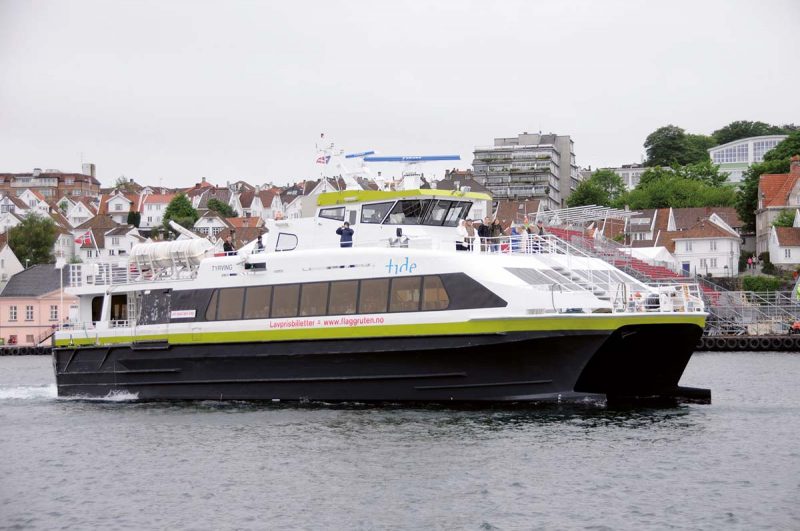
The entrance for shipping from the sea is from the Tungenes Lighhouse through Byfjorden with forty to fifty metres of deep water and moving south east for 6.2 miles to the inner roads of the harbour. Byfjorden is crossed by three roads, the Stavanger City Bridge and the Hundvag Tunnel, both at the southern end of the fjord, and the Byfjord Tunnel at the northern end of the fjord. Stavanger city is situated at 58°58’ N, 5°44’ E, and the shipping anchorage is to the north at Dusavik with its mainly petroleum and gas industries with at least a depth of up to 25 metres in coarse sand. Permission of the Harbour Master is required for anchoring east of Ulnes, and pilotage is compulsory for all vessels in this tricky area for navigation of many small islands and islets.
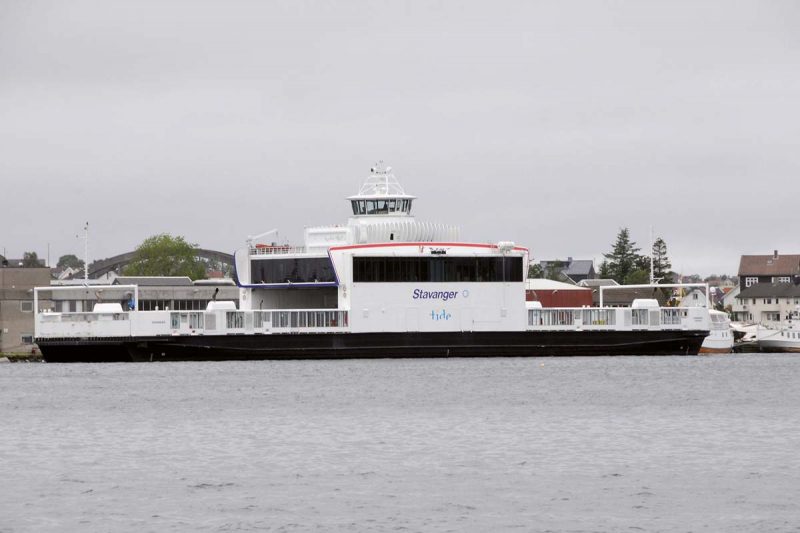
The harbour facilities include at Vagen some 1,600 metres of quay with alongside depths up to thirty feet, and good rail access with cranes and a warehouse of 6,000 square metres. The East Harbour at Stavanger includes over 900 metres of quay with piers for the local ferries and private wharves, all with alongside depths of 23 feet. The Jorenholmen quay has a cold store for reefer cargoes, and there are grain silos at Nordkronen quay with a capacity of 250,000 tonnes and alongside depths of up to 15.5 metres. In the south, there are Hjellvag quay of length 116 metres, and Kvalaberg quay of length seventy metres, with alongside depths of thirty feet. The tanker berths are at Tasta opposite Ulnes, and at Dreyersholmen to the south east of Nordkronen with up to 30 feet of water alongside, and at Hillevag with up to 42 feet of alongside water depth. There are several other private installations dotted around the Stavanger area. Stavanger city is divided into seven boroughs:-
- Hundvag Island is connected by a narrow man made isthmus to Buoy island and by a tunnel and the Stavanger City Bridge via Engoy, Solyst and Grasholmen islands into Stavanger.
- Tasta, which is part of Amoy island and part of the mainland.
- Eiganes og Valand, a central area.
- Madla to the south west of the city.
- Storhaug to the east of the city.
- Hillevag to the south east of the city.
- Hinna to the south east of the city.
Economy Of Stavanger
The oil industry is the backbone of the economy of Stavanger, but this has not always been the case, with the fish canning industries from 1900 to 1950 forming a big source of employment with over fifty canneries. The town was the ‘canned capital’ of Norway, and included those of the famous merchant Christian Bjelland, who founded his own group of canneries, the last of which was closed down in the city in 2002.
The offshore oil and gas industry provides, with engineering, some 59% of current employment. The production of giant oil platforms at the Moss Rosenberg shipyard on Buoy island can provide employment for up to 40% of the population. There are several other industries, mainly agriculture, food, beverages, publishing and two daily newspapers. The industry of Stavanger is now highly decentralised from the centre of the city, to Forus in the south on the border of the large town of Sandnes and Sola with its international airport, and to Dusavik in the north with its petroleum and gas processing industries. Stavanger today is among the top four maritime cities of Norway, coming in fourth after Oslo, Bergen and Alesund to the north with their larger registered shipping fleets.
The presence of the headquarters of the State owned Statoil in the city led to Stavanger becoming the centre of the Norwegian oil industry. Petoro is another Norwegian State owned company responsible for managing the commercial aspects of the State’s direct financial interest in petroleum activities of the offshore Norwegian continental shelf that has its headquarters in the city, as have several other oil agencies and international oil major headquarters and offices. Jattavagen on Gandsfjorden was for two decades from the 1970s an important area for the construction of large concrete Condeep oil platforms for the offshore oil industry. The concrete base for the large Troll A platform was cast at Vats, 55 kilometres north of Stavanger, as well as Condeep jackets for three Gullfaks platforms. The Offshore Northern Seas (ONS) exhibition and conference for the oil industry every two years attracts up to 100,000 visitors with many from overseas in this global industry.
Tourism is important to Stavanger, with tourist boats leaving quays in the town for the majestic Lysefjord, with the flat topped very high vantage point of Pulpit Rock as a major attraction.
Norwegian Petroleum Museum
The Norwegian Petroleum Museum (Norsk Oljemuseum) in Stavanger is located just to the east of the Skansekai quay on the east side of the Vagen, and is one of the best museums in the world that tells the story of oil. The creation of oil and gas millions of years ago, how petroleum is extracted from land and sea, how it is refined and used throughout the modern world, are just some of the spectacular exhibits in the modern galleries. Models, films and interactive displays show how the Norwegian oil industry developed from the mid 1960s, with the Ministry of Industry opening its first office in Stavanger. The museum has excellent models and exhibits on the first drilling rigs used in the Norwegian sector of the North Sea, as well as the steel and concrete platforms for bringing the crude oil to the surface, and others in use as accommodation platforms. This museum is highly recommended for all to visit as it has large modern, striking architecture to welcome the visitor, and houses this most interesting and unique story of oil. It welcomed almost 100,000 visitors in just over ten years from an opening date in 1998, and is the only petroleum museum in Europe.
The museum has on display the actual bracing of one of the legs that failed on the oil rig Alexander L. Kielland in March 1980 in the Ekofisk oil field of the Norwegian sector with the loss of 123 lives. The rig was owned by Stavanger Drilling A/S and based at Stavanger and had been launched on 5th June 1976 at a shipyard in Dunkirk as a mobile drilling rig. She was leased to Phillips Petroleum of the U.S.A. at the time of the disaster, and had been named in honour of the Norwegian writer, Alexander Lange Kielland. She was in use as an accommodation rig at the time of the disaster linked to the production platform Edda 2/7C. The rig had 212 men onboard on the evening of 27th March 1980, with 130 men relaxing off duty in the mess hall and cinema. The wind was gusting to forty knots with seas up to twelve metres high, when a loud and sharp ‘crack’ was felt at 1827 hours followed by trembling and the rig heeled over 30 degrees and then stabilised. Five of the six anchor cables had broken, the one remaining cable preventing the rig from total capsize. The remaining anchor cable snapped at 1853 hours and the rig capsized. The cause was later traced to a fatigue crack in one of the six bracings (bracing D-6) which connected the collapsed D-leg to the rest of the rig.
The rig had seven lifeboats for 50 men and twenty rafts for twenty men, with four lifeboats launched but only one managed to release from the lowering cables when it reached sea level. A fifth lifeboat came adrift and surfaced upside down, the occupants righted it and helped nineteen other men into it as they were desperately swimming around. The rafts of the rig detached and saved sixteen men, and a further seven were rescued by supply boats and seven more swam to the Edda production platform.
The loss of 123 men in the Norwegian sector, and the later loss of 167 men in the British sector on 6th July 1988 when the Piper Alpha production platform on lease to Conoco blew up and sank in huge flames and smoke 120 miles east of Aberdeen, led to a severe tightening of safety practices. In particular, the command structure of a rig was established beyond all doubt, and a clear immediate command issued to order abandonment in cases of emergency was designated on all rigs, as there is very little time to evacuate, usually only minutes rather than hours.
Det Stavangerske D/S A/S Ferry Services
Det Stavangerske D/S A/S was founded in 1855 to provide cargo and passenger services to small communities around the Ryfylke fjords and Rogaland county from Stavanger. The small steamers had black funnels with three widely spaced red bands, and flew houseflags containing three red and two white horizontal bands with a blue triangle carrying a white star to the mast. The first small steamers included Haukelid 143/69 from the Bergens Mek Verksted yard, Kong Sverre 602/67 and Kong Haakon 632/78 both from the Nylands yard near Oslo, and Kong Olaf 555/83 from Stavanger Dokk. The company had four small steamers in 1890 and doubled their fleet to eight small steamers at the turn of the century. The company participated in the famous Hurtigruten passenger service from Bergen to Kirkenes in the north of Norway, as well as in passenger cargo services from Stavanger to Oslo, Bergen, Haugesund and Trondheim, and later had cargo services from Western Norway to Sweden, the Baltic, Finland and the U.K. A larger fleet of fifteen small steamers was used around the Stavanger fjords at the outbreak of war in August 1914, including the new steamer Stavanger of 680 grt built by the Trondheim Mek Verksted.
Sanct Svithun (St. Swithun) of 1,376 grt was ordered in 1926 from the yard of the International Shipbuilding and Repairing Company in Danzig as their first special purpose built ship for the Hurtigruten service, and replaced Kong Haakon of 900 grt built in 1904. She was of length 225.9 feet with a beam of 35.2 feet, and ran her sea trials on 30th June 1927. She joined a fleet of twenty cargo and passenger ships including the engines ‘midships cargo ship Ulsnes of 655 grt built in 1907 by the Akers yard in Oslo with a foremast and a mainmast and four derricks on each mast to serve her two holds. Sanct Svithun was in dry dock on the morning of the German attack on Norway on 9th April 1940 and did not re-enter service for a few months. However, she was attacked by six British aircraft with bombs and machine guns three years later on 30th September 1943 near Stadt, and grounded at full speed and on fire near Ervika with the loss of around 55 people including a dozen Germans, fortunately 75 crew and passengers were saved.
Ryfylke of 1,243 grt was purchased in 1931 as a passenger and cargo ship, and had been built as one of two sisters for the East Asiatic Company (EAC) of Denmark for their service to the West Indies as St. Croix and St. Thomas. They were sold on 30th June 1920 to the United Baltic Corporation and renamed Baltannic and Baltriger. The latter became Ryfylke but she was torpedoed and sunk off Stad in Southern Norway on 5th February 1941.
Rogaland of 902 grt and built locally by Stavanger Dokk in 1929 was almost destroyed by the huge explosion in 1944 in the central Bergen Vagen harbour and capsized onto her starboard side. She was righted and repaired and served in post-war years until the early 1960s when she was laid up and is presently preserved in Stavanger. She has recently in 2018 served as a hospital ship for a film about the Dunkirk evacuation of the British Expeditionary Force in May 1940. She was replaced in 1964 by a new Rogaland of 490 grt and 750 dwt from the local Rosenberg yard. She had dimensions of 201.7 feet in length, 32.0 feet in beam, and 12.0 feet depth and was an engines aft open shelterdecker. She had one hold and two hatches served by a single crane and a single derrick, with a service speed of thirteen knots from an eight cylinder MaK diesel engine of 1,400 bhp.
The 1950s fleet was a big one of 28 passenger and cargo ships, with the passenger ships including the motorships Sanct Svithun (2) of 2,095 grt, Stavanger of 1,315 grt, and Kronprinsesse Martha of 904 grt, and the steamers Kong Olav of 789 grt and Kong Sverre of 868 grt. Kong Olav had been built in 1912 by Lindholmens Varv at Gothenburg as Svanen for Hallands Angbats A/B of Sweden. She was used as an auxiliary gunboat by the Swedish Navy between 1939 and 1941, and was then sold in 1946 to Det Stavangerske D/S A/S and renamed Kong Olav. She was of length 180 feet with two cargo holds and accommodation for fifty passengers ‘midships. She was sold to Arabian owners in Jeddah in 1959 and renamed Om El Kheir, and after a grounding near her home port of Jeddah in December 1968 she spent a long time in layup until broken up locally.
Sanct Svithun (2) had been ordered in the Autumn of 1946 as a Hurtigruten replacement for the war loss of the same name, but was not launched at Ancona in Italy by Cantieri Riuniti dell’ Adriatico until 18th May 1950. She was one of several war compensation vessels agreed by the Italian Government and arrived at her home port of Stavanger on 4th June 1950 under the command of Capt. Samuel Alshager. Sanct Svithun had a spacious and well equipped First Class Dining Room and First Class Smoking Room and served the express route from Bergen for the next twelve years.
On 21st October 1962 she sailed northbound from Trondheim in the early afternoon bound for Rorvik with 89 passengers and crew onboard. She sailed through the narrow Stokksundet and out into the open sea bound for the narrow Naeroysundet taking her in a north easterly direction into Rorvik on Vikna Island. However, due to reasons unknown, probably faulty instruments, her Master and navigating officers had lost control of her position and course and she headed out into the open sea and veered towards Nordoyan Lighthouse on an outer island well short of her destination of Rorvik. She ran aground at 2156 hours near the lighthouse and the seas poured into her forward hold, and in heavy seas she soon slid off the rocks and sank within one hour. She had not radioed her true position, this was not known to her Master and officers, and many hours were lost in the rescue bid, consequently 41 lives were lost, among them her Master and all of her navigating officers on the bridge at the time of her loss. Thus, the exact reason of why she was so far off course on an open stretch of sea that she had travelled hundreds of times before will never be known.
Det Stavangerske D/S A/S had a fleet of ten passenger and car ferries in 1973 with both bow and stern loaders on local services to Ryfylke fjord, Kopervik and Skudenshavn, including Ulsnes of 951 grt carrying 400 unberthed passengers and 55 cars, Tungenes of 680 grt carrying 600 unberthed passengers and fifty cars, and Skudenes of 709 grt carrying 400 passengers and 42 cars. In 1998, the company was operating eight pallet vessels of up to 4,450 dwt named Akershus, Cometa, Karmsund, Nordvaer, Rogaland, Royksund, Tananger and Tungenes, as well as the reefer Nordjarl (ex Ice Pearl) of 2,650 dwt.
Today, the company is still a family owned concern operating a Norled subsidiary of ferries and fast ferries in Rogaland, Hordaland, Sunnmore and Tronheimfjord on contract to the Norwegian Government, as well as a single coastal service from Troms to Oslo. These services carry over nine million vehicles and eighteen million passengers per year. Local ferries in Rogaland run to Tau to the north east, and also to the island of Vassoy. In 2007, Tide Sjo A/S merged with Stavangerske to form a joint venture for fjord services, and on 1st January 2012 the merged company changed its name to Norled. Tourist cruise boats are operated on Lysefjord, Hardangerfjord and Sognefjord.

A separate subsidiary was founded in 1989 as DSD Shipping A/S to run an international tanker fleet. Today, this consists of 12 vessels including the Aframaxes Stavanger Blossom, Stavanger Bliss, Eagle Stavanger and Eagle Sydney of 105,600 dwt built during 2007/09, and the smaller tanker Stavan-ger Breeze of 45,780 dwt, and the sisters Stav Viking and Stavfjord of 16,635 dwt, with 5 more tankers on order.
Moss Rosenberg Stavanger Shipyard
Rosenberg Verft was established in 1896 on the island of Buoy near Stavanger. The yard built many types of ship including side fishing trawlers e.g. Suloy 150/20, small passenger ships, cargo ships, tankers, and much later it built huge LNG carriers and oil platform topsides. The yard was originally called Rosenberg Mekaniske Verksted, with the output going to local trawler owners and shipowners. The small yard shipbuilding was supplemented in 1914 by the production of boilers and steam and diesel engines. There were periods of prosperity, but Rosenberg struggled to find work during the freight rate depressions of the 1920s and 1930s. However, an economic recovery started in 1936, which continued until the invasion of Norway by Germany in April 1940, with a big demand for war work from the invading forces.
Sigval Bergesen D.Y., the local shipowner, purchased the yard in 1943 while it was still very busy with war work. However, one Norwegian shipowner sued the yard after the end of the war for not delivering ships that had been ordered before the German invasion. A post-war building programme of small engines aft colliers and open shelterdeckers of 3,600 dwt with three holds, and an engines ‘midships collier class of 2,750 dwt kept the yard busy between 1946 and 1950.
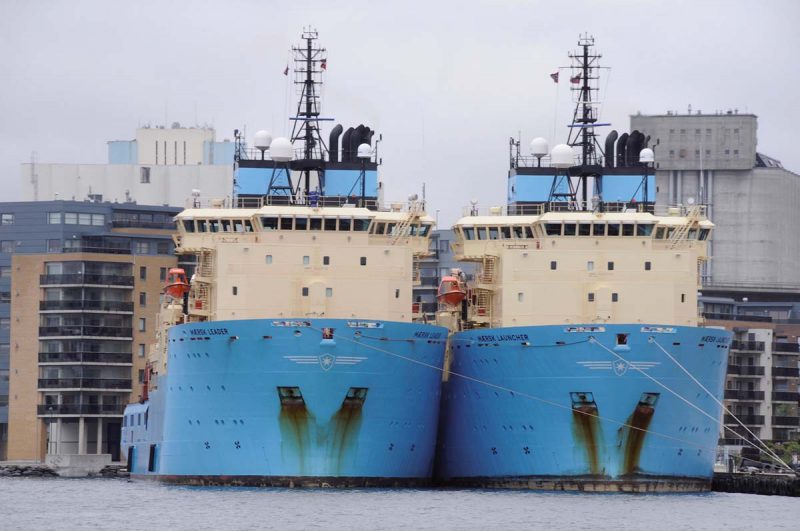
The yard then began a period of large tanker building and great prosperity, with Bergesen taking most of the output of 25 tankers built between 1950 and 1965. These included Berge Bergesen of 16,190 dwt, Arnfinn Stange of 16,200 dwt, Astarte of 15,500 dwt and Kongstank of 15,500 dwt. Four sisters of 33,050 dwt followed in Berge Bergesen, Bergehus, Bergeland and Bergesund between 1956 and 1959, the larger Berge Edda, Berge Jarl and Bergebonde of 54,950 dwt in 1961/62, Berge Bergesen of 96,140 dwt in 1963, Bergechief of 96,845 dwt in 1964, Bergeland of 96,170 dwt in 1965, Bergepilot of 102,690 dwt in 1965, Bergetun of 109,545 dwt in 1967, Berge Tasta of 156,400 dwt in 1969, and the sisters Berge Edda and Berge Fister of 162,100 dwt during 1970.
These supertankers were powered by big Burmeister and Wain diesel engines, and it seemed that the fitting out berth at the yard was always occupied by a very large Bergesen tanker, which almost but not quite stretched into the navigable channel into Stavanger. Tankers were, of course, built for other owners including Fernrose of 32,725 dwt for Fearnley and Eger A/S in 1957, Kongsvang of 32,910 dwt for A/S Solvang in 1959, Thorhild of 16,200 dwt in 1956 for Tonnevold’s Tankrederi A/S of Grimstad, Storanger and Hallanger of 34,450 dwt for Westfal Larsen in 1960, Storstad of 33,025 dwt in 1958, Ida Knutsen of 34,400 dwt in 1958, and Kongsgaard and Kongsvang in 1959/60 for Brodrene Olsen A/S of Stavanger. Shell also took two ‘D’ class tankers of 70,050 dwt in Dallia and Daphne during 1963/66.
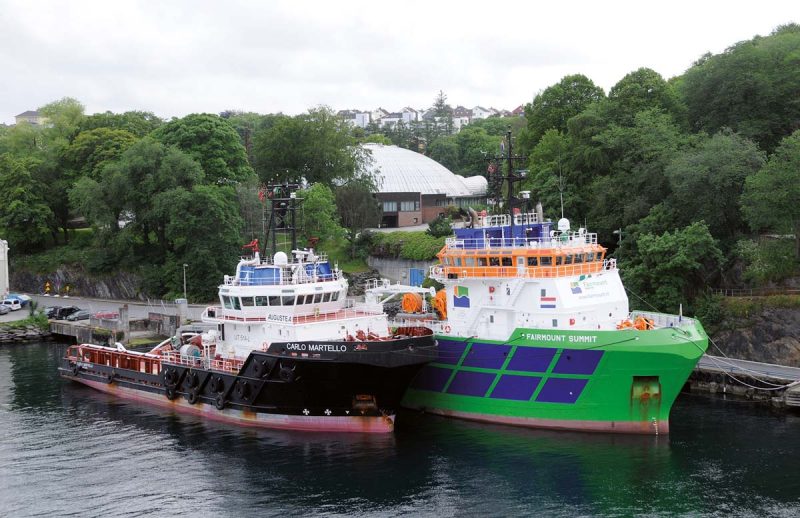
Kvaerner Industries A/S purchased the Moss Verft yard, located on the east bank of Oslofjord thirty miles south of Oslo and opposite Horten, in 1961. The Moss yard had a history dating back to 1889, but a predecessor company had repaired ships there from 1860 and built schooners from 1871. Large sailing ships continued to be built after the turn of the century, but the yard suffered in the 1920s slump, and closed only to reopen in 1927 as Moss Verft and Dokk. Shortly after 1961, Kvaerner Industries A/S also purchased the Rosenberg yard at Stavanger, and in 1970 it merged the two yards together as Moss Rosenberg Verft.
The new owner had the construction of giant LNG carriers as a priority, as forecasts for the long term charters of gas carriers were misleadingly upbeat and thought to be on the near horizon. Large LNG carriers such as Norman Lady, LNG Challenger, Hoegh Galleon, Hilli, Gimi, and Khannur were built between 1973 and 1977, as well as lpg tankers such as Garmula for P. & O. Bulk Shipping Division, Hoegh Multina, Centum, Celsius, Berge Fister, as well as the smaller Nestegas of 4,500 dwt for Neste O/Y of Finland. Crude oil tankers and parcel oil tankers were completed such as Golar Petrotrade (later Bow Queen), Golar Petrosea (later Bow Princess), Golar Petrosun (later Bow Lady), and Bruse Jarl for Det Nordenfjeldske D/S of Trondheim, all of 32,700 dwt between 1974 and 1978.
The hull of the Ocean Viking drilling rig was half built at Stavanger, with the other half prefabricated by the Burmeister and Wain yard at Copenhagen. The two halves were then towed to Nylands Verft yard near Oslo, where Aker welded them together for a completion date in September 1966. The yard also built small local ferries e.g. Solbakk of 944 grt in July 1978 carrying 500 unberthed passengers and fifty cars, and in the same year one of a trio of ro-ros named Basto I, Basto II, and Basto III of 2,550 grt with bow and stern doors and carrying up to 700 unberthed passengers and fifty cars on a thirty minute crossing of Oslofjord from Moss to Horten. The order was shared with the Framnaes A/S and Fredrikstad A/S yards.
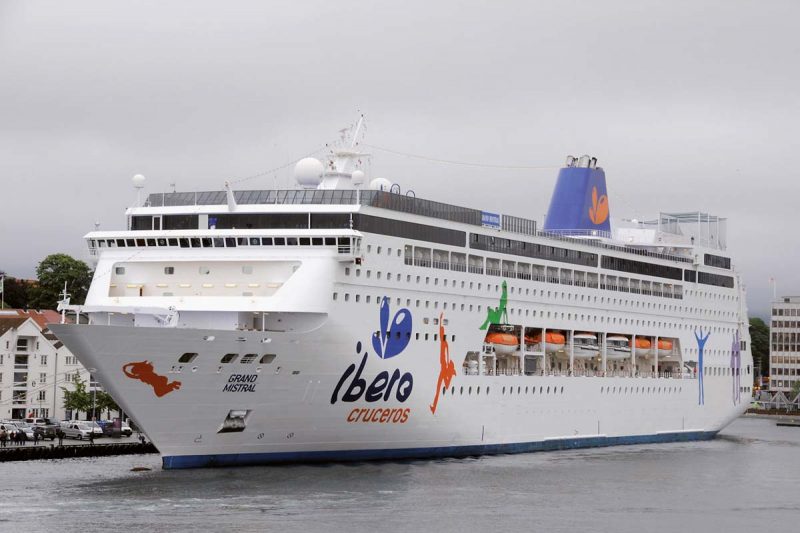
The building dry docks are of dimensions 280.0 x 43.0 x 8.3 metres, and 170.0 x 23.0 x 7.3 metres and can build ships up to 160,000 dwt, with large North Sea bow loading shuttle tankers a yard speciality. A dozen cranes of up to ninety tonnes capacity are available, with three prefabrication sheds immediately to the west of the larger building dock, and there is a floating dock of length 460 feet with a lifting capacity of 4,000 tonnes. The Rosenberg yard then began a series of production of oil production modules and platform topsides from 1983.
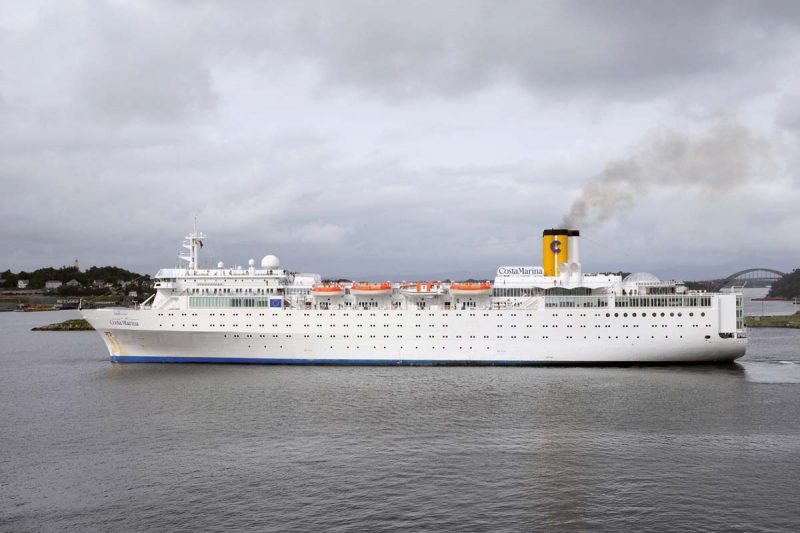
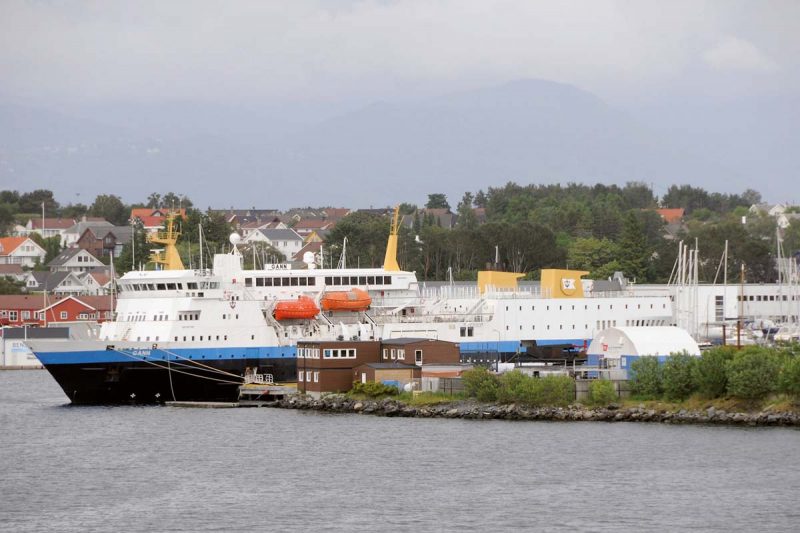
The really giant Norwegian offshore oil projects such as Gullfaks, Statfjord and Troll A were completed in the deep waters of the Norwegian fjords near Stavanger with Rosenberg yard expertise. The Yme platform for Shell Oil was completed at the Rosenberg yard in 2010, with the legs lifted into place by crawler cranes of huge height. The yard was sold by Kvaerner Industries A/S to local investors in 2003, and its name reverted to Rosenberg Verft. Further changes of ownerships have included to the Bergen Group ASA in 2007, and to the Worley Parsons Group in 2013. The yard has several large orders in hand to keep its 800 employees in work until the year 2020, including the oil platforms Johan Sverdrup and Martin Linge. I wish to sincerely thank the excellent book ‘Rosenberg Verft in growth and change over 100 Years’ for the information contained in this section.
Stavanger Shipowners
The main Stavanger shipowning family was Sigval Bergesen and his son of the same name. Sigval Bergesen senior became a shipowner for the first time in 1887 when he purchased the coastal steamer Edda of 220 dwt, which was sold during the following year. However, he had quickly built up a fleet of ten sailing ships and small steamers by three years later. These included the steamers Flid 501/71 built by Larsson of Gothenburg, Irene 250/79 also from Gothenburg, Skjold 491/82 from Eriksberg of Gothenburg, Jarl 456/89 from the local Stavanger Dokk, and Bernadotte 416/89 from the Bergens Mek Verksted yard. Sailing ships such as Chimea, Mentor, Utsire and Victoria were also in the fleet, together with the very fine three masted steel barque Charles Racine of 1,635 grt and completed by the North Sands yard of John Blumer in August 1892 at Sunderland. She was of length 250.2 feet, moulded beam of 38.5 feet, and depth to weather deck of 22.0 feet, with a fo’c’stle of length 32 feet and a poop deck of length 36 feet.
The first steamers with his trademark ‘Fond’ or ‘Fonn’ suffix began to appear in the Sigval Bergesen fleet in the late 1890s with Kalfond 1,219/00 from the Dundee Shipbuilding Company, the wooden steamer Krosfond 592/99 from Stavanger Dokk, Langfond 2,552/91 from the Wallsend yard of C.S. Swan and Hunter and purchased second hand, Snefond 369/98 from Stavanger Dokk, Solfond 1,864/83 built at Vegesack and purchased second hand, and the spar decker tramp Storfond of 3,482 grt in October 1898 from the Port Glasgow yard of Russell and Company with triple expansion steam engines supplied by Rankin and Blackmore of Glasgow.
A fleet of ten tramps and coasters was being traded on the outbreak of war in August 1914 including the newer Ringfond of 637 grt built in 1901, and Krosfond of 828 grt built in 1906 as Rosebank by the Clyde Shipbuilding and Engineering Company at Port Glasgow. Sigval Bergesen became a tanker owner for the first time in 1928 with the delivery of the new motor tanker Dalfonn of 14,410 dwt from the Eriksberg yard at Gothenburg. She was followed by the similar Barfonn in 1931 from Gotaverken of Gothenburg, both for registry under Skibs A/S Dalfonn. Meanwhile, his son had set up a separate shipowning company in 1918 as Sigval Bergesen D.Y. and Company (D.Y. means ‘the younger’).
The younger Bergesen moved into tanker ownership in 1935 with the delivery from the Odense yard in Denmark of the twin screw 14,500 dwt motor tanker President de Vogue, followed by the similar Charles Racine (2) in 1937. The combined tanker strength of the two companies had reached eight tankers by the outbreak of war in September 1939, of which half were lost to enemy action by the end of the war.
Sigval Bergesen D.Y. and Company began their post-war rebuilding programme with the tanker Bergechief of 18,500 dwt in 1949, using a new prefix of ‘Berge’ for their names, which has continued to the present day. Six larger tankers of 33,000 dwt followed between 1954 and 1959 from the Eriksberg and Rosenberg Stavanger yards to give a fleet of seven tankers by 1960. His father’s companies had also been rebuilt by the Harland and Wolff Ltd. and Gotaverken yards with a dozen new tankers between 1949 and 1963, starting with Rimfonn of 12,500 dwt and ending with a tanker of the same name of 91,400 dwt in 1963. Four lpg gas carriers of between 4,800 dwt and 15,000 dwt were then completed during the 1960s.
A massive expansion by Sigval Bergesen D.Y. and Company then took place during the late 1960s and 1970s to enable it to easily be the largest tanker owner in Norway by 1980 with a fleet of five Mdwt, composed of thirty owned and long term chartered tankers, ore bulk oil carriers, and bulkers. The largest of these were the sisters Berge Emperor and Berge Empress of 420,000 dwt built during 1975/76.
A series of double hull tankers of 305,000 dwt in 1993/94 including Berge Sigval, Berge Stadt and Berge Stavanger for operation on the ‘spot’ charter market and maintain the leading international position of the company.
A merger in 1996 with A/S Havtor Management, the gas carrier subsidiary of Kvaerner Shipping A/S, produced a combined total of 47 gas carriers under the new company Bergesen D.Y. ASA. This was acquired in 2003 by the Sohmen family controlled World Wide Shipping of Hong Kong, which had been established in 1951, to form the present day BW Shipping Group from 2005. A huge current fleet of 170 giant bulkers, tankers and gas carriers of up to 400,000 dwt with names beginning ‘Berge’ or ‘BW’ owe their heritage to a Stavanger shipowning family that purchased their first ship over 130 years ago.
Stavanger Cruise Calls In 2018
A large total of 187 cruise ships have called from January to December 2018, bringing over 350,000 passengers to spend their money in the local city centre shops close to their cruise ships in Vagen harbour. This is almost double the total of 99 cruise ships and 146,000 passengers arriving in 2009, with a total of 111 cruise ships and 175,000 passengers a year later. Stavanger is a very compact town and ideal for walking, and all but very badly disabled passengers can easily enjoy the pleasures of the Vagen area and the city centre. Some thirty cruise lines will bring passengers from all over the world to Stavanger, particularly from the U.K., Germany, Spain, Italy and other European countries as well as from the United States of America. These are:-
- P. & O. Cruises 24
- Aida Cruises 24
- Viking Cruises 23
- MSC Cruises 11
- Pullmantur Cruises 11
- Phoenix Seereisen 9
- Holland America Line 7
- Costa Cruises 7
- Princess Cruises 7
- Royal Caribbean International 6
- Cruise & Maritime Voyages (CMV) 6
- TUI Marella Cruises 6
- Ponant Cruises 5
- Saga Cruises 4
- Noble Caledonia Cruises 4
- Windstar Cruises 4
- Regent Seven Seas/Oceania 3
- Cunard Line 3
- Seabourn Cruises 3
- Disney Line 3
- Celebrity Cruises 2
- Fred. Olsen Lines 2
- Norwegian Cruise Line 2
- Voyages to Antiquity 2
- FTI Touristik 2
- Plantours and Partner 2
- ResidenSea 2
- Azamara Cruises 1
- Silversea Cruises 1
- Crystal Cruises 1
- TOTAL 187
Postscript
Stavanger is the oil capital of Norway, and the Port of Stavanger receives a wide range of types of ships annually. Cruise ships, offshore oil vessels, general cargo and multi-purpose vessels, container ships including those of Maersk Line, international and local ferry traffic, as well as pleasure boat tourism.
The Stavanger and Rogaland region offers a well developed infrastructure and people with a high level of skill and expertise.
Vagen harbour can accommodate the very largest cruise ships of the world, with five giant cruise ships often seen moored in Vagen harbour at any one time. There are four thousand metres of quays in the port, and a land area of 300,000 square metres of warehousing and storage space.
Stavanger Regionen Haven IKS is the parent company of the port, and deals with administration activities linked to the port, and is also the owner of the port quays, properties and mooring facilities.
The Board of Directors and shareholders of Statoil unanimously passed a resolution on 15th May 2018 to change the company name to Equinor, the ‘Nor’ suffix indicating Norwegian ownership, and the ‘Equi’ prefix indicating equal partnership.
The Norwegian Government as majority shareholder of Statoil supported the proposal and voted in favour of acceptance. Statoil has been producing oil and gas from the Norwegian sector of the North Sea in huge quantities, with current production of oil in 2018 being 2,080 million barrels of oil equivalent per day, and current production of gas being 940 million barrels of oil equivalent per day.
Stavanger Port Authority has put plans in place by which it will acquire the port of Risavika Havn A/S by 2019 to act as a logistics hub of Western Norway with a two hundred acre development. Risavika Harbour is located to the south west of Stavanger at Tananger, and is a thirty minute drive from the city centre. It is being marketed today as Westport, with a history dating back to 1960 when Norwegian Shell decided to survey the area for the possibility of building a modern oil refinery at Risavika.
The port today consists of eight areas and quays for handling the passenger terminal of the Fjord Line ferry Stavangerfjord that runs to Hirtshals in Denmark, containers, project cargo, breakbulk cargo, ro-ro cargo for Nor-Lines, offshore oil vessels, warehouse storage, outside storage, cranage up to 124 tonnes capacity, smart terminal links to user computer systems, and a gated entrance.
The Port of Stavanger is twinned with the U.K. oil capital of Aberdeen, and thus has many important strands of business and is very forward looking for new business opportunities to replace its traditional trades.

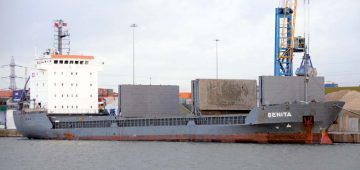



Comments
Sorry, comments are closed for this item